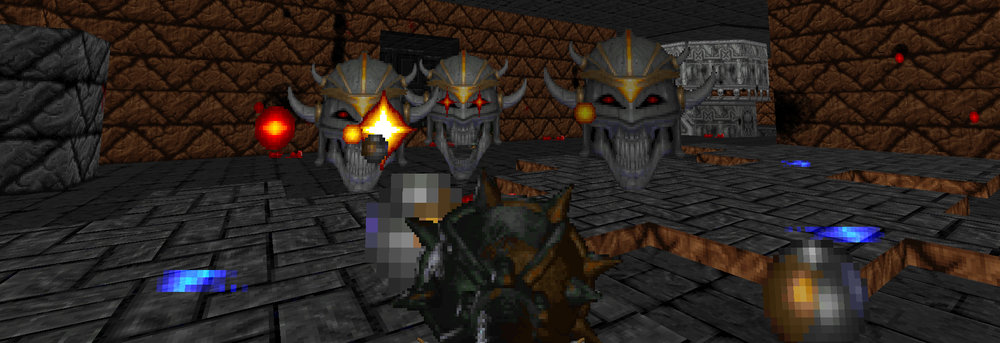
It’s October, and I believe I promised you RetroFiends some spooky shit. Well, let’s ease into it, since it’s so early on in the month… we’ll start with one of the creepiest FPS games of the 1990s, one that took good advantage of the legendary Doom Engine – a tale of magic, evil, destruction, and revenge.
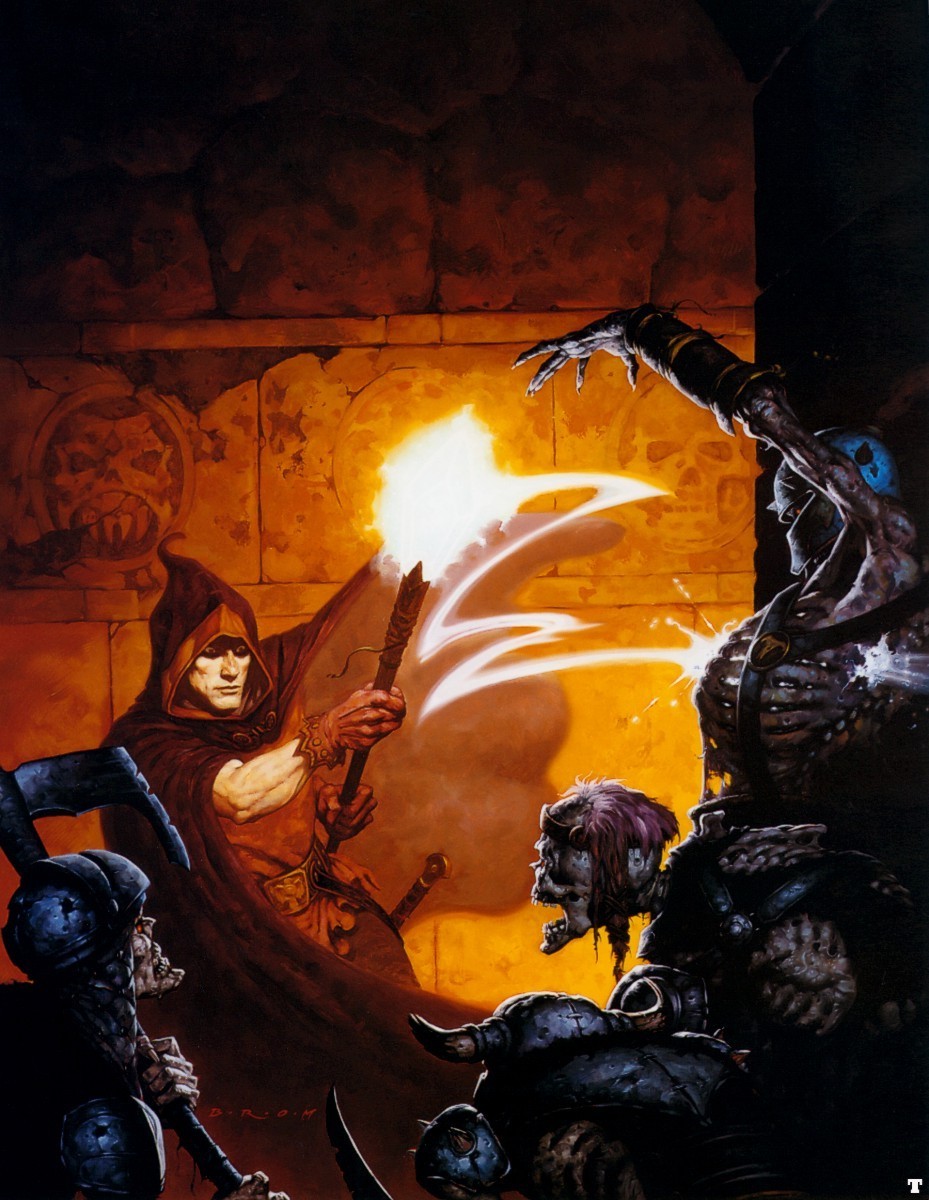
Heretic was first released in December of 1994, and was published by id Software through GT Interactive. The game used a modified (one could say “expanded”) version of the Doom engine, featuring advances such as ambient sound, an inventory system, and the ability to tilt the player’s view up and down. Though they published Heretic, id didn’t make it… that credit falls to Raven Software.
Raven has become a big name in modern gaming, having worked on games for Marvel as well as the Call of Duty series. Their first title, an RPG called Black Crypt, was released in 1992. Raven garnered more attention with the following year’s ShadowCaster, a first-person adventure game that utilized an engine somewhere between Wolfenstein 3D‘s and Doom‘s in terms of capability. John Carmack of id wrote the engine and licensed it to Raven, establishing a working rapport that led to the production of Heretic a year later.
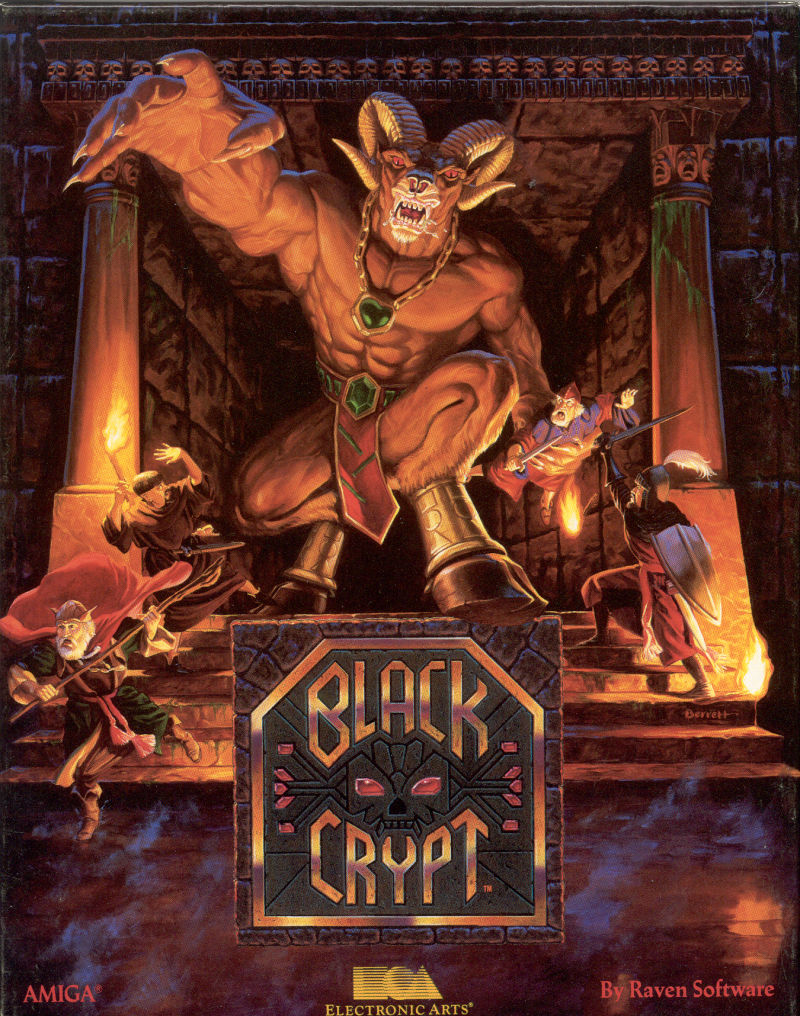
Heretic tells the story of a doomed world called Parthoris. Three entities called the Serpent Riders have possessed the kings of this world and corrupted its people. Only a clan of elves known as the Sidhe have dared to stand against the Riders, who have retaliated by declaring the entire race “heretics” and waging brutal war on them. In the end, the Serpent Riders’ grip on Parthoris is weakened… but at the cost of many elf lives. The Sidhe retreat, but one remains, intent on vengeance – Corvus, the character controlled by the player. Corvus is intent on destroying D’Sparil, the weakest of the Riders who has stayed behind to rule Parthoris. To reach the evil overlord, Corvus must make his way through three episodes (plus two in the expansion) of fantastic horror. Lucky for him, he’s not some soft-ass Keebler bitch. Forget all you know about the stereotype… this elf is a streetwalkin’ cheetah with a heart full of napalm, to quote one of the world’s purest poems.
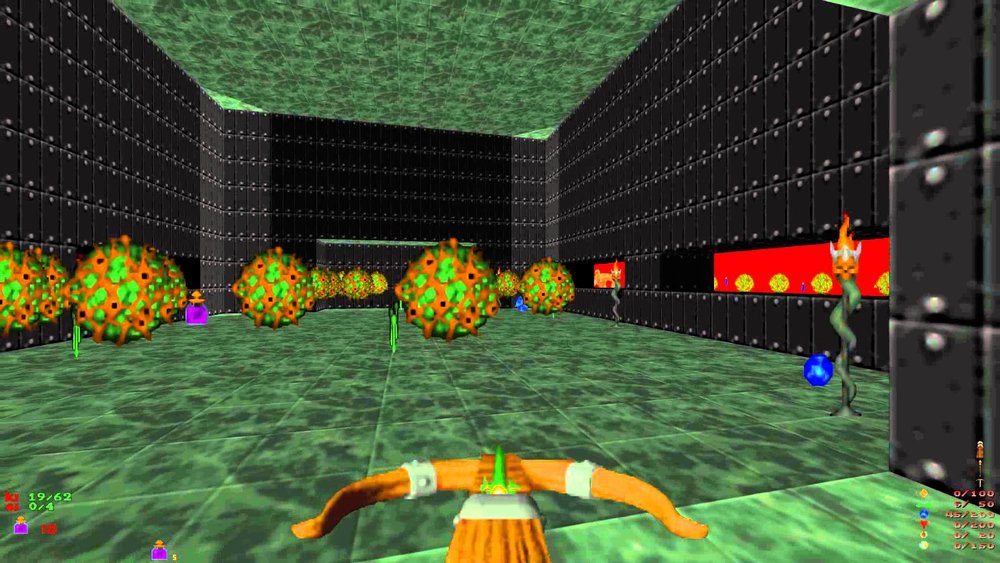
While gameplay is very similar to Doom at the ground level, Heretic boasts additional capabilities not present in the original game format. You can fly, look all around, and save powerups for careful use when needed. Heretic has an extra layer of play that is a solid improvement on an already legendary engine. Instead of boomsticks and rocket launchers, Corvus blasts his way through the evil armies of D’Sparil with potent spells and relics. You start out in a dockyard with nothing but a simple wand and the butt of your staff to defend yourself, but do not despair – enchanted crossbows, jolting gauntlets, and fireball-hurling staves can be found and used to wreak havoc on the enemy. Most of these implements are noticeable analogs of their Doom counterparts; for instance, the electrifying gauntlets behave very much like Doom‘s chainsaw, while the Phoenix Rod is clearly a rocket-launcher wearing a different skin. Corvus also picks up items along the way that he can carry with him and activate later on, as inventory. These tools include wings for flight, masks that render the wearer temporarily hazy and near-invisible, and even rings that give you a few moments of indestructible invulnerability. Learning to conserve these relics and not waste them is a key part of the game’s strategy… and strategy you will need.
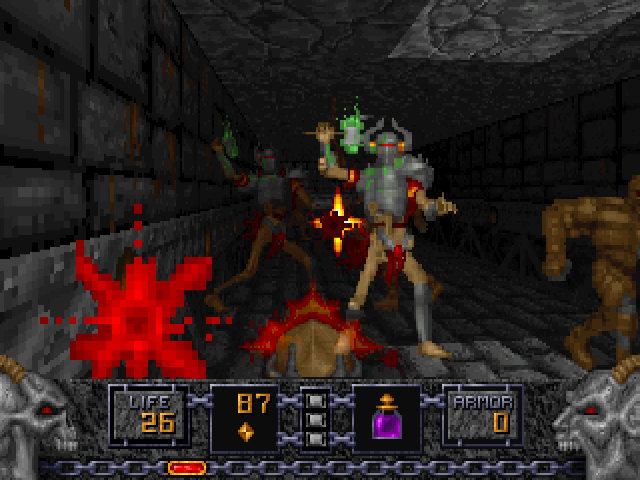
The rank and file monsters you encounter range from the bizarre to the downright terrifying. Mummies, skeletal warriors, scorpion-men, mutant reptiles, and ghostly enemy warlocks hound your every step. Not only are these creatures visually impressive, but the sound effects for Heretic bring them to ghastly life as they shriek and howl for your blood. The soundtrack is pretty middle-of-the-line, but E1M1’s music stands out, as well as the tracks for the boss fight levels. The boss-type monsters are also impressive; perhaps the most visually striking are the Iron Liches (hovering steel skulls bedecked in grand helmets, spitting elemental ruin from their mouths) and the Maulotaurs (think minotaurs, but fucking huge and armed with hammers capable of launching flame). Even the environment itself will work against you – not just in the familiar ways (lava, etc), either. In Heretic, you take damage from falling too far, and rushing water and push you into such chasms as well. The walls can crush you in new ways, and gaseous puffballs the size of a human being fill certain areas (behaving much like Doom‘s barrels but respawning rapidly after their destruction). Parthoris is not a safe world, not in the clutches of D’Sparil.


The Maulotaur and an Iron Lich. In true video game tradition, the huge terrible asshole boss monsters become regulars after their first climactic appearance. Happy Birthday. (click to enlarge.)
An expansion, Shadow of the Serpent Riders, was released in 1996, the game’s first actual retail release (the original full version was available only by mail after registering the shareware demo). The expansion adds two more episodes as an epic epilogue to the defeat of D’Sparil, packed with even more peril and adventure. The game’s formal sequel, Hexen, was released in 1995. Hexen features non-linear gameplay and in-depth puzzle solving as well as multiple player-character choices. Both of these titles would receive numerical sequels in the latter part of the 1990s, more conventionally 3D with polygon-based graphics running in an engine based off of Quake II‘s.
I give Heretic a solid 8 out of 10. It’s a solid improvement on a game engine that had already shocked the world, its dark fantasy theme is a novel flavor for an FPS, and it packs an addictive challenge. If you’re into classic FPS games and you’ve never played it, please treat yourself.
